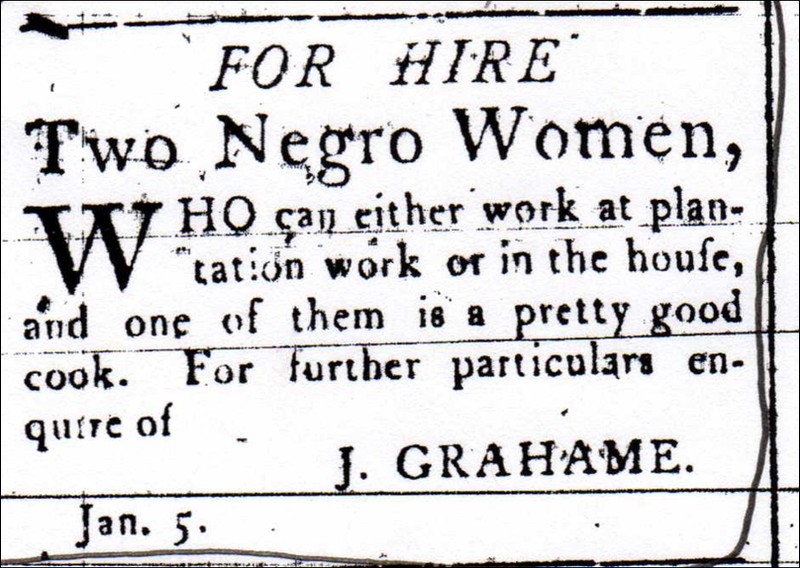Log Cabin
Introduction
Text-to-speech Audio
Images
Advertisement of Grahame Property, 1825

Advertisement, hiring out, 1805

Backstory and Context
Text-to-speech Audio
Enslaved women who lived here including Polly, Ann, Eliza, Sarah Ann, Hester Ann and Susan, had many skills that were monopolized by the Grahame family. Women who were skilled in sewing or cooking were seen as more valuable and marketable, a fact John Grahame used to his advantage in 1825 when he listed for sale several women who "are good housemaids, cooks and seamstrsses." Enslaved women who were skilled at sewing would have not only been expected to do simple sewing such as mending for the Grahame family, but at the same time she would have sewed her own clothing, clothing for other enslaved people, and her family. This marketability threatened the security of the enslaved women as her skills might increase her likelihood for being rented out or sold as was the case for the women enslaved by the Grahame family in 1805 and 1825 based on newspaper advertisements placed by John Grahame.
